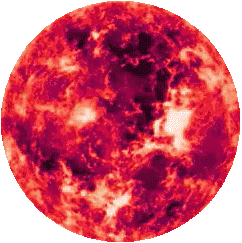
Proxima Centauri Star System
The Proxima Centauri Star System contains 1 Star and 3 Planets.
1 Planet is a habitable planet candidate, planet Proxima II
The Proxima Centauri Star System is located within near the inner rim of the Orion Arm, within the Local Fluff of the Local Bubble, between the Radcliffe wave and Split linear structures (formerly Gould Belt) in the Milky Way Galaxy, which is 26,000 light years away from the massive Sagittarius black hole at the center of the Galaxy.
/ Star & Planets / Stars & Planets List 0 to 20 Light Years / Proxima Centauri Star System
24.937 Trillion Miles
4.2421 Light Years
1.3006 Parsecs
Proxima Centauri

M5.5 Class Red Dwarf
5,016 F Photosphere
Proxima I
0.028 AU
Tidally Locked
0.200 (EM)
Sub Terran
6,413 Miles
? Density
? g
Atmosphere ?
Hot
Life ?
Extreme Flares
Main Sequence
4.853 Billion Years Old
Population II Star
Heavy Element Poor
0.0485 AU
Tidally Locked
1.27 (EM)
Super Terran
8,710 Miles
? Density
? g
Atmosphere ?
Freezing
Life ?
Proxima III

1.523 AU
Not Locked
Neptunian
12.0 (EM)
? Miles
? Density
? g
Atmosphere ?
Frozen
No Life
1 AU = 92,955,807 Miles
Chemical Rocket Travel Time
55,046 Earth Years
Fission Rocket Travel Time
85.37 Earth Years
Fusion Rocket Travel Time
42.68 Earth Years
Laser Light Sail Travel Time
21.34 Earth Years
Proxima Centauri Planets Probability to Host Life
Proxima I: The chances of life on planet Proxima I are considered low due to its close proximity to its star, Proxima Centauri, which likely results in a hot surface temperature and tidal locking. This close proximity results in a likely surface temperature that is too high for liquid water to exist on the surface, which is a key requirement for life as we know it. Proxima I is also likely tidally locked, meaning one side always faces the star, leading to extreme temperature differences between the two sides. While not ideal for Earth-like life, it's possible that Proxima I might have habitable polar regions, but this is speculative.
Proxima II (Zemdonia): While the planet Proxima II is in the "habitable zone" of its star, meaning liquid water could exist on its surface, it also receives intense radiation and stellar winds from its star. These intense flares from its star could have stripped away the planet's atmosphere, potentially making it uninhabitable. A thick atmosphere or strong magnetic field could offer some protection against these intense flares, but it's unclear if Proxima II possesses these features. Proxima II is also most likely tidally locked to its star, meaning one side always faces the star, potentially leading to extreme temperature differences between the two sides. Despite these habitability challenges, some models suggest that a thick atmosphere on Proxima II could also potentially redistribute heat, and make the planet habitable, and some research indicates the potential for oceans and even life.
Proxima III: The chances of life on the planet Proxima III are considered low. It has no surface, but might harbor unknown life within its clouds.

Join the Exo Solaria Union
Help aid in UAP research, Stay informed on the UAP phenomenon, and to help push the United States government for full disclosure regarding UAP and alien species.

While I was initially very hopeful for the possibility for life on planet Proxima II, I am not so certain now. For me, it really depends upon if the planet Proxima II has a significant atmosphere, and an active magnetic field to help protect it against the extreme flares from the Proxima Centauri star. If Proxima II has had its atmosphere stripped away, then all chances for life evaporate.